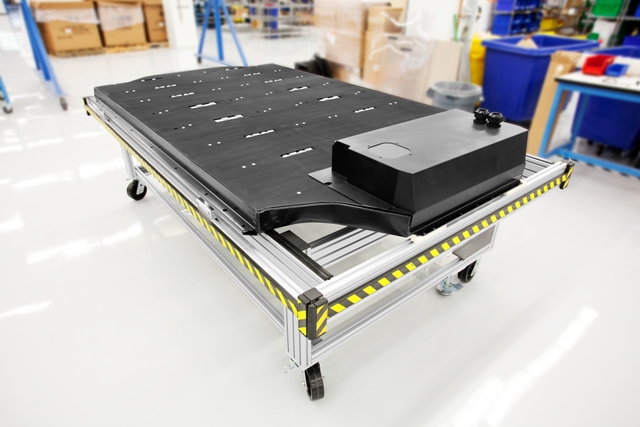
 My previous entry, in which I argue that the extra range of the Tesla Model S, in particular that of the Model S with the 85 kWh battery pack, is its single most important advantage, has sparked some interesting conversation on Facebook.
My previous entry, in which I argue that the extra range of the Tesla Model S, in particular that of the Model S with the 85 kWh battery pack, is its single most important advantage, has sparked some interesting conversation on Facebook.
Not surprisingly, a couple of folks have correctly suggested that not everyone needs 200+ miles of EV range and that, furthermore, the 70 or so miles a LEAF can consistently get you (some folks have indicated to me that the LEAF barely squeaks out 50 miles of range when driven in cold conditions), is perfectly okay for them.
A gas car’s range
Of course, some of these folks have more than one car — and their other car(s) is/are a gasoline car(s), which can get them anywhere they want to get, regardless of “range” — technically gas cars also have a range, meaning the range they can be driven without having to be filled up again.
That one doesn’t need more range than what the LEAF (which, by the way, will soon sport a very affordable entry level price of $28,000 before any tax credits!) can deliver, meaning somewhere between 50 and 100 miles, in particular in a two-car family, is something I’ve pointed out repeatedly in previous blog entries on SolarChargedDriving.Com.
But, if you’re a one-car household, things tend to look a lot different. Then, the extra range — substantial extra range in the case of the Tesla Model S 85 kWh version — does indeed matter quite a lot, though, of course, there is the option to rent a gasoline car for longer trips. This is an option I suspect the vast majority of Americans don’t want to be forced into exercising due to the very powerful “convenience”, or, really, inconvenience factor.
 Model S inefficient?
Model S inefficient?
But, retort the LEAF advocates, if you really don’t need the extra range — except for on a few comparatively rare occasions, why pay such a premium for it? Additionally, they say — and here there are plenty of Chevy Volt advocates who’ve made the same argument, why drag around so much extra battery, and extra battery weight, when you’re rarely going to use it?
Doing so, they say, is “inefficient.” Better, apparently, to use gasoline — either by driving a total gasser, or by using a plug-in hybrid such as a Volt, for those relatively rare longer trips.
I’ve seen this argument in quite a few places, including in the current Facebook exchange about the Model S and the LEAF and range.
My response: A big “Hmmm….”
First, I’d like to see some hard numbers that take into account the energy loss associated with pumping oil out of the ground in Saudi Arabia, shipping it thousands of miles via a filthy tanker ship that’s probably burning incredibly polluting bunker fuel, refining it, and then trucking it to a gasoline station near you, as opposed to say, pumping electrons produced by solar panels on one’s rooftop directly into the “excessively” large battery of one’s “inefficient” Model S, as my brother Thomas, is doing.
Second, let’s just say it is comparativley “inefficient” to cart around an 85 kWh battery pack when you’re only going to push 200+ miles of range a few times a year. To me, a big hater of Big Oil — yes, hate is the right word in my case — it’s worth this “inefficiency” to be able to say you aren’t using a single drop of oil to drive your car around. Period.
Nothing beats the satisfaction of flipping the Big Bird at Big Oil and powering one’s own driving miles — every single one of them — with home solar (yes, we’ve generated so much extra kWh with our solar system in 2 1/2 years that even if, say, I took a look trip in a Model S, which I don’t have ;-), to California, etc., I could still say those miles were indirect solar offset miles). And I can say this about the satisfaction of a 100-percent clean break from oil-powered driving not yet having had a chance to do this but in anticipation of hopefully one day being able to do so. Imagine how satisfied I’d feel if we were actually doing this 😉
Seems to me that at least some of the same Volt advocates who criticize the Model S for its alleged “inefficiency” for lugging around a battery pack whose total capacty will rarely be used, are among those Volt owners who’ve never tapped the gasoline engine in their car (yes, there are Volt drivers out there like this!).
{googleAds}<div style=”float:right; margin-left: 10px;”>
<script type=”text/javascript”><!–
google_ad_client = “pub-7703542917199961”;
/* 200×200,
created 12/8/09 */
google_ad_slot = “7950368454”;
google_ad_width
= 200;
google_ad_height = 200;
//–>
</script>
<script
type=”text/javascript”
src=”http://pagead2.googlesyndication.com/pagead/show_ads.js”>
</script>
</div>
{/googleAds}
To them, I say: 1) Congratulations on driving 100 percent electric miles; 2) What are you doing dragging around that gasoline engine you don’t need, or rarely use, everywhere — isn’t that a highly inefficient use of the battery electric power you’re using?; 3) and, finally, why did you bother with the Volt in the first place? Why not just buy a pure EV 😉
So, what’s your take on the whole dragging around a large battery pack whose total capacity you’ll only ever rarely use is inefficient argument?
And, just to put in my own shot here and try and frame the debate before it gets underway: Let’s just say an EV with 250-miles of pure electric range and one with 70-miles of range cost the same amount, which one would you buy — and why ;-)?
Related articles–>


